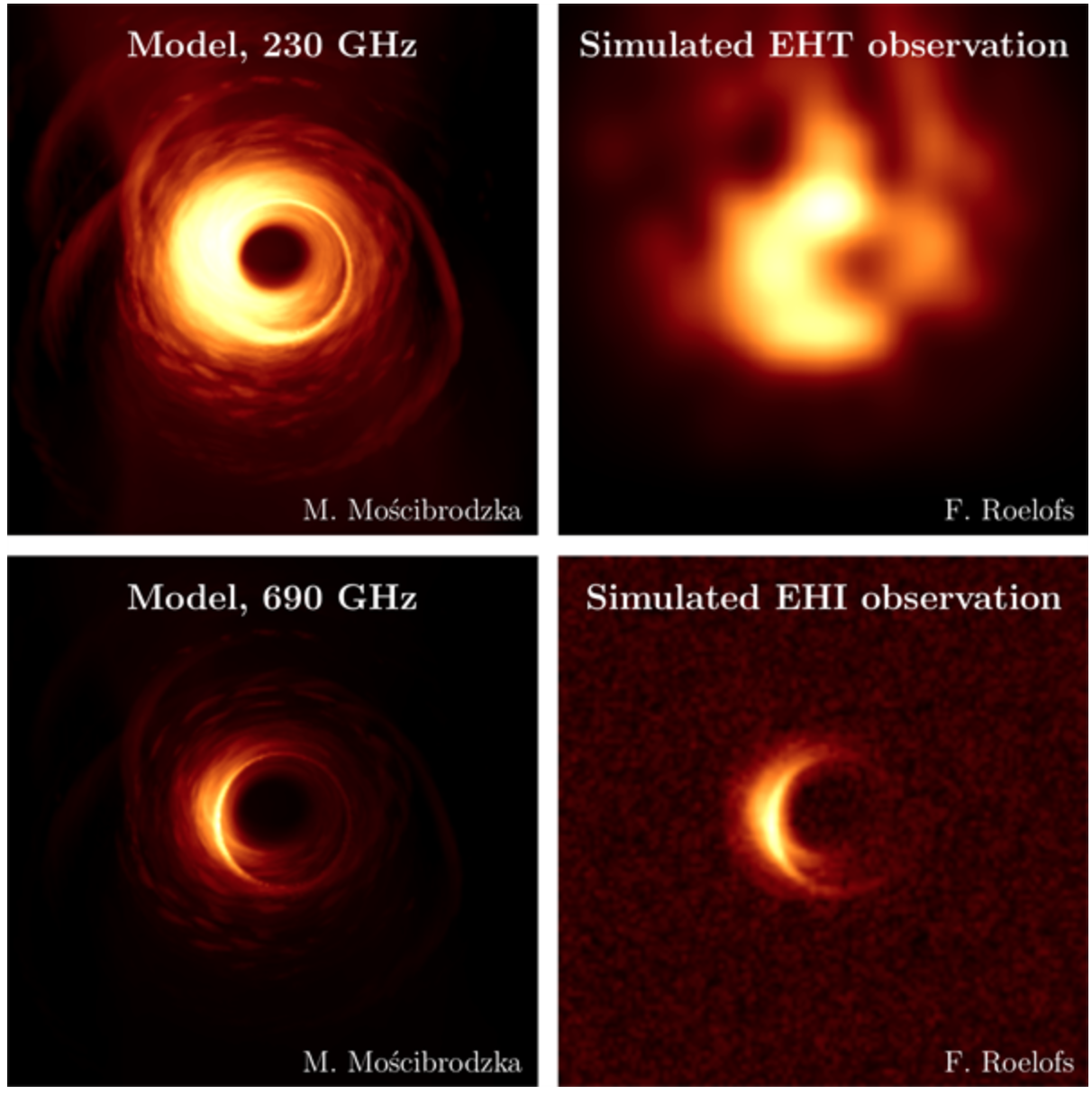
What clearer black hole photos might look like with the EHI satellite system. Images: Freek Roelofs
Scientists just recently managed to take the first image of a black hole and already are gearing up to get more images with sharper resolution. The hope is to be able to test Einstein’s Theory of General Relativity and in order to achieve this, researchers are seeking to launch 2-3 satellites to orbit the Earth and look specifically for black holes that will be called the Event Horizon Imager (EHI). Freek Roelofs, a Ph.D. candidate at Radboud University and the lead author of the article proposing the idea of EHI explained that there are numerous advantages to using satellites to track black holes as opposed to permanent radio telescopes on Earth, namely that “In space, you can make observations at higher radio frequencies, because from Earth these are filtered out by the atmosphere.” Satellites would allow astronomers to take images with a resolution more than five times what is possible with the telescopes that captured the most recent black hole.
Radboud University astronomers, along with the European Space Agency who have proposed the creation of EHI explained in a press statement that:
Sharper images of a black hole will lead to better information that could be used to test Einstein’s Theory of General Relativity in greater detail. Radio Astronomy Professor Heino Falcke explained that “The fact that the satellites are moving round the Earth makes for considerable advantages. With them, you can take near perfect images to see the real details of black holes. If small deviations from Einstein’s theory occur, we should be able to see them.”
Why This Matters: The New Scientist explained the importance of testing Einstein’s general theory of relativity better than I (Miro) could:
“[The theory] is one of the towering achievements of 20th-century physics. Published in 1916, it explains that what we perceive as the force of gravity in fact arises from the curvature of space and time. Einstein proposed that objects such as the sun and the Earth change this geometry. In the presence of matter and energy it can evolve, stretch and warp, forming ridges, mountains and valleys that cause bodies moving through it to zigzag and curve. So although Earth appears to be pulled towards the sun by gravity, there is no such force. It is simply the geometry of space-time around the sun telling Earth how to move. The general theory of relativity has far-reaching consequences. It not only explains the motion of the planets; it can also describe the history and expansion of the universe, the physics of black holes and the bending of light from distant stars and galaxies.”
Being able to test the theory would give us immense insight into our universe, space, and time.
May 9, 2019 » black holes, Einstein, theory of relativity


